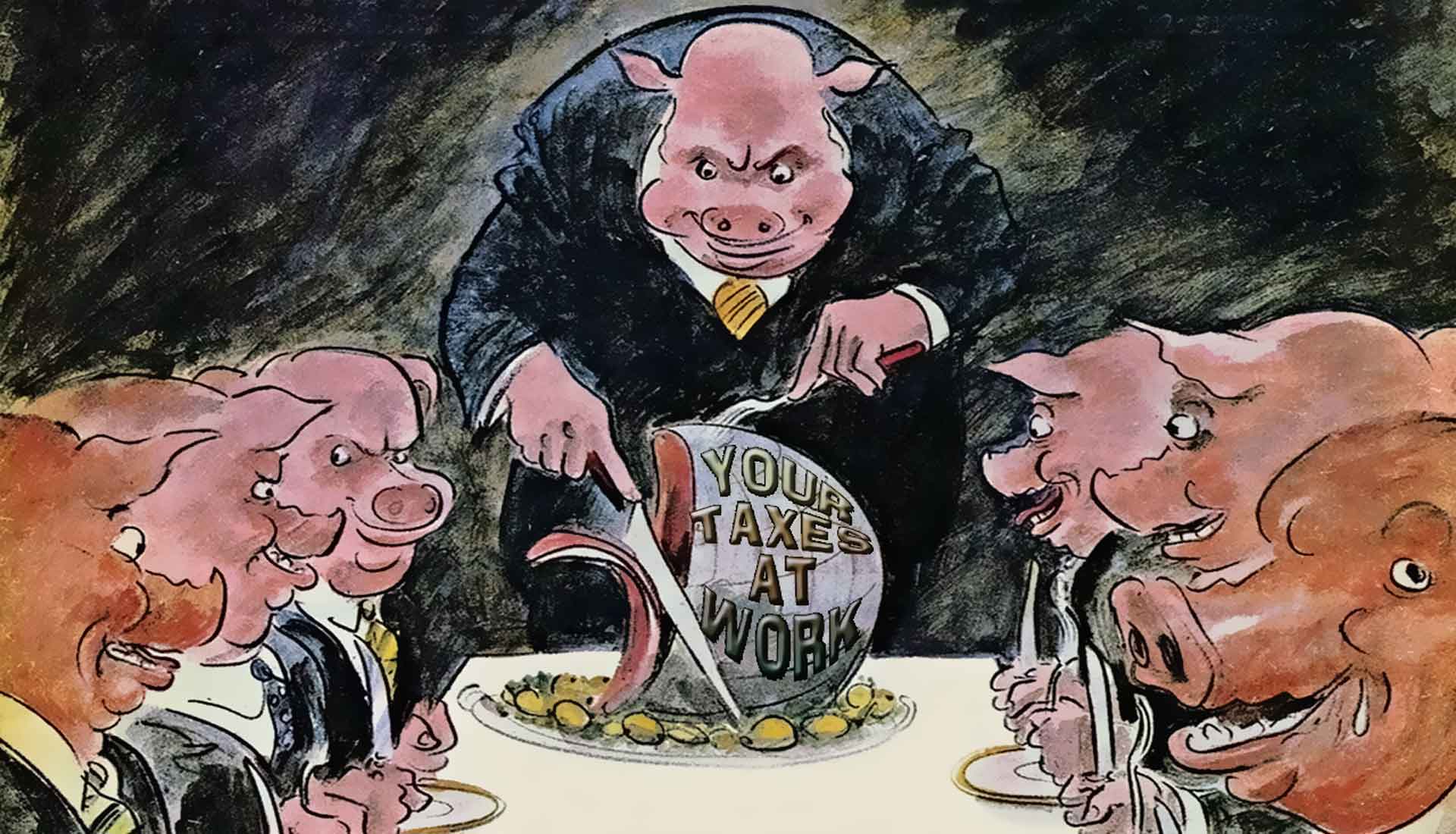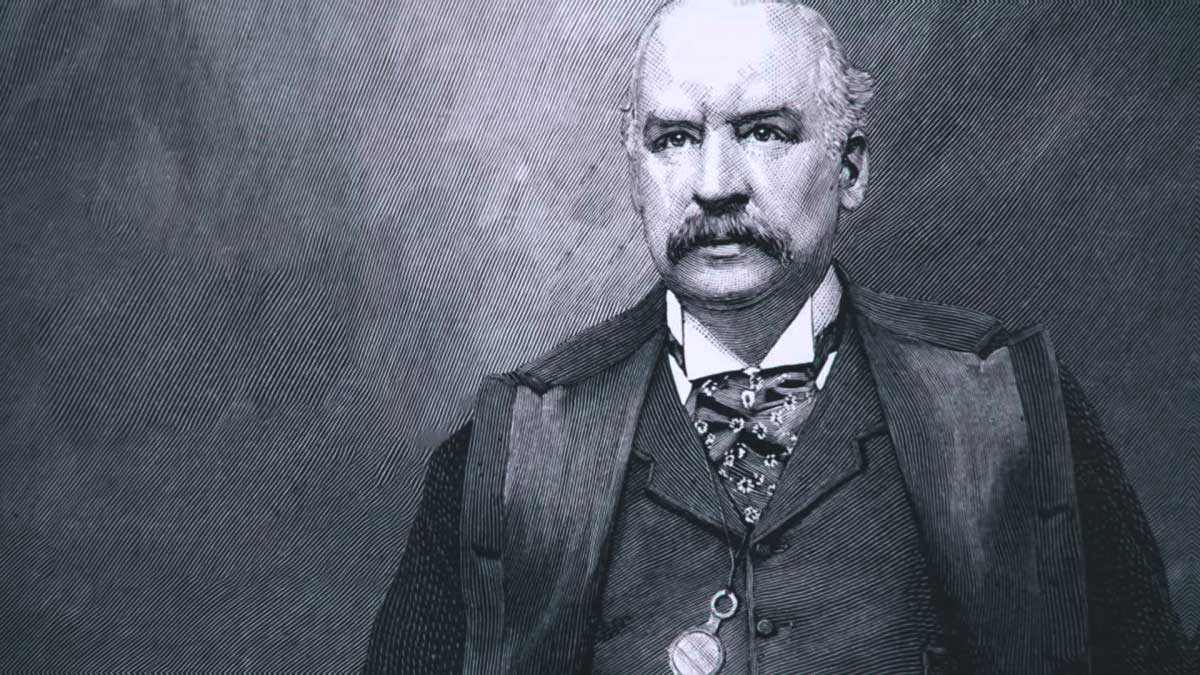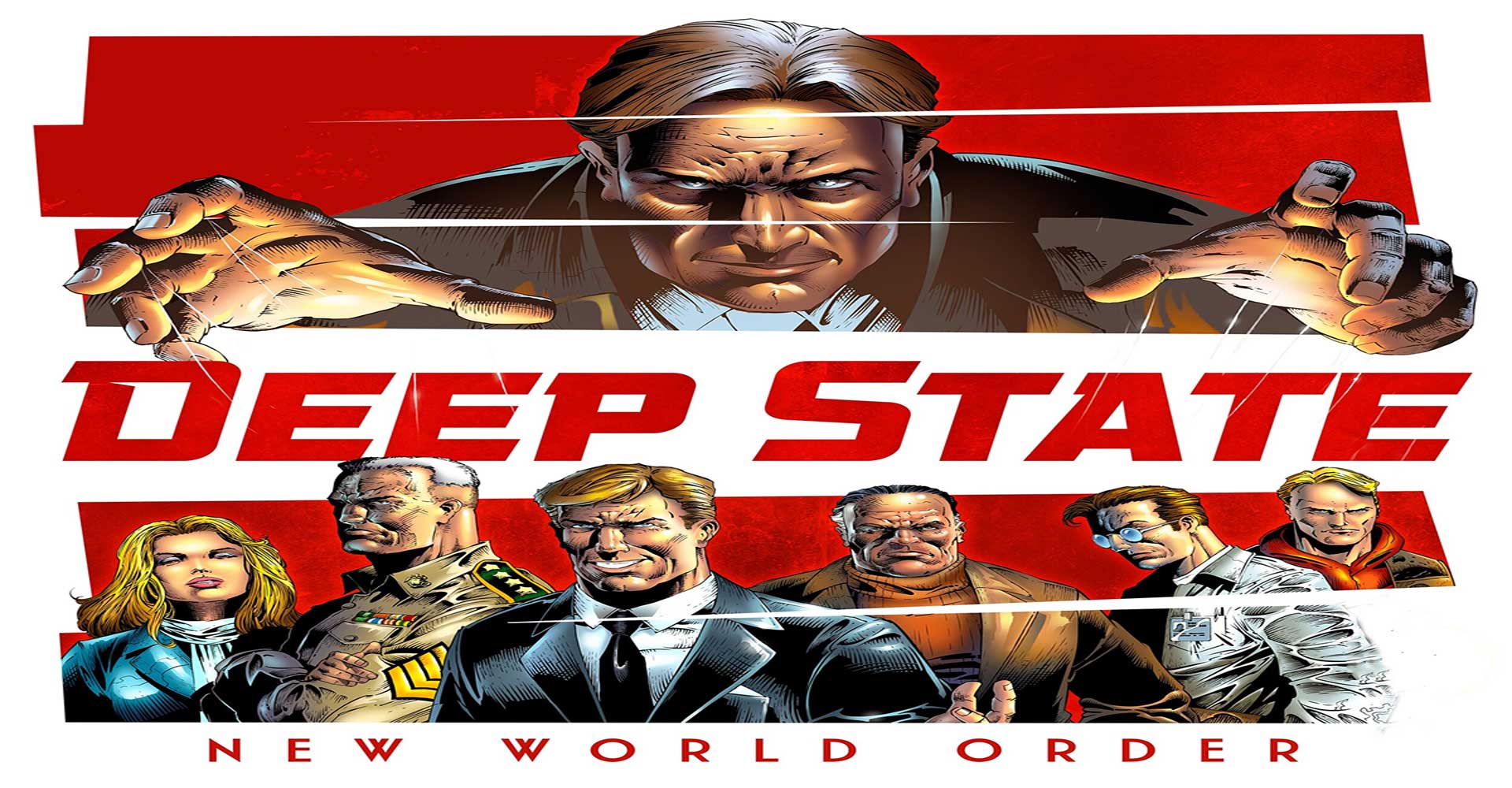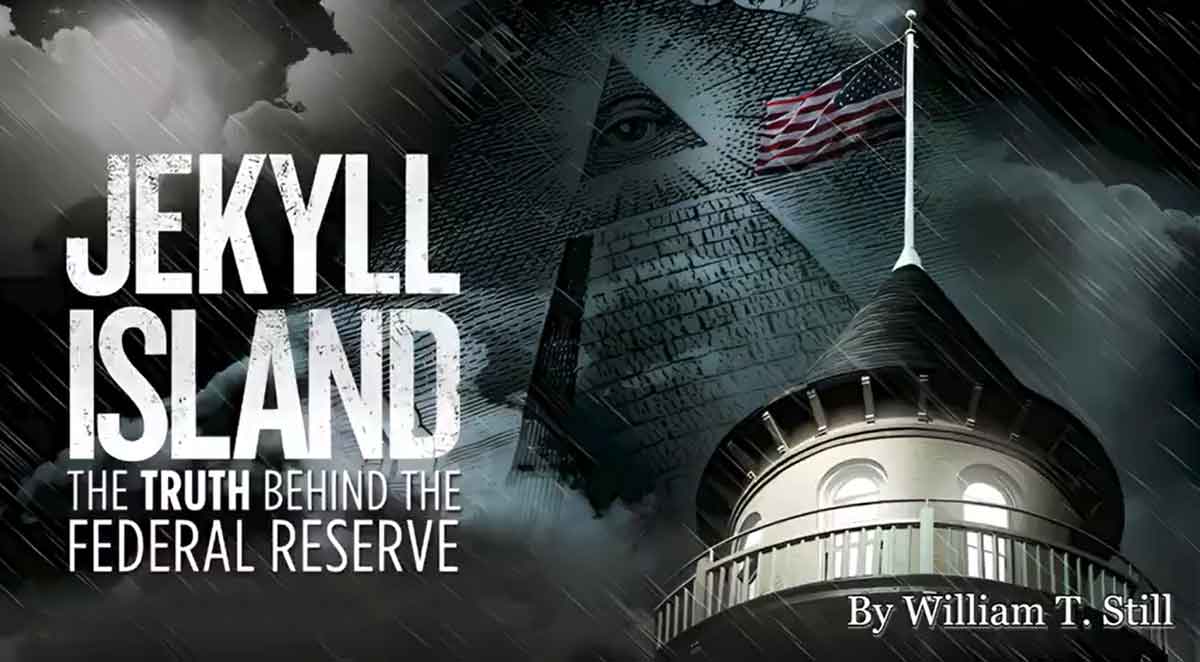


Click image above for video
Jordan Maxwell
explains how we’ve been
robbed for centuries!
by …

and …

and …

The Robber Barons…
the
Rothschilds,
Rockefellers, and Morgans
The most evil dynasties
to inhabit the Earth
in recent times
Prepare to uncover the startling reality behind the world’s most influential families and their immense control over the global economy.
The Federal Reserve Cartel, consisting of the Rothschilds, Rockefellers, and Morgans, wields unprecedented power that extends well beyond the realm of oil.
Imagine this: The Four Horsemen of Banking, including Bank of America, JP Morgan Chase, Citigroup, and Wells Fargo, unite with the Four Horsemen of Oil, such as Exxon Mobil, Royal Dutch/Shell, BP, and Chevron Texaco.
Yet, their dominion
doesn’t stop there.
Through an intricate web of private banks, they have expanded their influence to encompass the music industry.
These colossal entities, along with Deutsche Bank, BNP, Barclays, and other European old money giants, hold the reins of the music industry, allowing them to shape its trajectory and exert their influence.
The Machiavellian machinations of the Rockefeller dynasty reach far and wide, commencing with their commercialization of music in the early 1900s.
They orchestrated a sinister plot to shift the world’s standard tuning of music to 440 pitch.
This insidious frequency was known to provoke heightened aggression, psychosocial agitation, emotional distress, and even physical ailments.
Behind closed doors, this manipulation resulted in financial gains for those complicit in the monopoly, including agents, agencies, and companies associated with the North American Rockefeller crime cartel and influential organizations.
Fast forward to the late 1980s when the Rockefellers summoned top music executives and artists to a highly clandestine meeting in Los Angeles.
Their sinister agenda?
To usher in the era of Controlled Rap Music, intricately linked to the privatization of U.S. prisons.
These privately owned prisons, operated by the Rockefellers, Rothschilds, Bush family, and other influential figures, served as money laundering operations, tax exemption schemes, and pyramid scheme enterprises.
Crafting a deceitful plan, the Rockefellers aimed to control the rap industry and target black communities by promoting violent music that fueled oppression and civil unrest.
They brought together leading executives and prominent black artists, binding them with strict confidentiality agreements.
Their objective was clear: orchestrate violence within the rap music movement while major record labels secured exclusive rights for production and distribution across the United States.
In return, they would receive shares and points within the private prison systems.
The Masonic scheme unfolded with precision, resulting in over 1,500 private prison systems incarcerating more than 1 million black teenagers by 1990.
These vulnerable youths, expressing the generational trauma imposed upon them, unknowingly contributed to the Rockefellers’ malevolent plan.
The private prison systems reaped billions annually from the government, establishing an extensive money laundering network through inflated products, such as ramen noodles priced at 8 times their actual value.
The flow of hundreds of billions from government funding, pyramid schemes, and insurance companies transformed prison privatization into a multi-trillion-dollar enterprise.
Local courts and judges mercilessly sentenced petty criminals and first-time offenders, filling the expanding private prisons.
Consequently, the United States holds the unfortunate record for the highest number of incarcerated individuals in the world, with an unprecedented number of prisons.
This was not a coincidence—it was a meticulously orchestrated plan by the Rockefellers.
But their influence
doesn’t stop there.
As the true faces of those who wield global authority are revealed, the Rothschilds and Rockefellers find themselves targeted by military alliance operations aiming to dismantle the Rothschilds’ deep state power in Europe, the UK, Russia, and China.
Click image above for PDF
JEKYLL ISLAND
The TRUTH behind the
FEDERAL RESERVE
Former Federal Reserve Employee:
‘$3 Billion Embezzled Every Day’
Introductory Note:
This essay details how the
Federal Reserve Bank of New York
embezzles $3 billion daily
using their exclusive control of
the auction accounts of Treasury securities.
These accounts are customer accounts
— not operational accounts —
and they have never been audited.
The author was inspired by an economics professor who informed his graduate class in money and banking about how the Federal Reserve Bank of New York (FRBNY) creates and hides phenomenal amounts.
The professor had previously been employed by the FRBNY.
The unidentified Wall Street owners of the Federal Reserve Board of Governors are assumed to be the same financiers who own the “Too Big to Fail” (TBTF) banks who are among the Primary Dealers in these auctions.
That is the only feasible destination
for the funds created.
This embezzlement by the Board of Governors (BOG) is the financial fountain that controls and funds the International Monetary Fund (IMF) and World Bank (WB) that is devastating the world with debt.
* * *
MANY ARE aware of the fact that the government incurs a trillion dollar increase in the national debt annually in order to spend money it does not have.
Congress-critters can then fund pork barrel projects back home, feed the special interests, and get votes.
Is theft by inflation for these “freebies” — or to pay for what has become our perpetual war to bring “freedom and democracy” to the world at the price of chains and slavery — the whole story? Far from it.
How Money is Created
For Congress to get the book-entry money credited to the government’s bank account, the Treasury Department must send a Treasury security to the FRBNY.
Then the Fed will honor checks on the account.
The fiat money is added to the economic system, (and inflation occurs), when the government spends the money.
The Fed purports that this operation is a “loan,” but there is no actual consideration put up by the Fed.
If a consideration were actually conveyed, there would be no increase of money in circulation and hence no inflation.
What really happens is that numbers are merely entered in a ledger (by the FRBNY) while no substance, and no deduction from any account, is involved.
The “loan” is a scam.
The fact that Ben Franklins, Washingtons, Lincolns, etc., are purchased by the Fed (for pennies in printing costs alone) from the government is ignored by Wall Street sycophants.
It is weird that the existence of a “loan” is alleged, while at the same time the owners of the Fed/BOG are not identified — and the Fed/BOG is trumpeted as a government agency, falsely suggesting the absurd proposition that the government is lending money to itself.
When the recipient of a government check takes the check to the bank for cash, he is given Federal Reserve Notes.
A “note” is normally a document showing that someone (in this case the Fed) owes you something (in this case, dollars).
The Fed purchases the Federal Reserve Notes (that have been printed by the U.S. Treasury) for 4 cents to 15 cents each depending upon the face amount.
Those promissory notes have historically promised they could be redeemed in lawful money, or that they could be redeemed in gold or silver, or that they were commercial paper.
Today they convey only that they are “legal tender.”
That expression means that, by law, you must accept them as if they were dollars.
They are currently declarations by the Federal Reserve to pay you nothing.
Auctions of Treasury Securities
What happens to the security received by the FRBNY as collateral for the “loan”?
The bank auctions it off to the public and pretends it is being sold by the Treasury Department.
You are led to believe the money will go to the government.
It does not.
More than $8.5 trillion in marketable Treasury securities are auctioned annually.
$7 trillion of the National Debt is rolled over by auctioned securities along with about one trillion dollars of new deficit spending securities.
The $7 trillion is credited to government accounts to pay off Primary Dealers, (PDs), who have collected maturing and called securities.
There is no increase in the amount of funds in the market, (inflation), or increase in the national debt incurred from the rollover.
Deficit spending securities are sold as a declared percentage of auctioned items.
If the one trillion dollars, (nearly $3 billion per day), from auctioned deficit spending securities was credited to the government, there would be no inflation or increase in the national debt.
But there is.
So, where does the money go?
Click image above for PDF
The Titanic Secret
of Jekyll Island
Robert Sepehr
Jekyll Island is located off the coast of the state of Georgia, where a secret gathering of elite bankers and politicians took place in 1910 laying the foundations for the Federal Reserve System in 1913, a year after the sinking of the Titanic (or sister ship Olympic).
Three of the wealthiest Americans living at the time, none of whose wealth came from banking and all opposed to the formation of a central bank, passed away on the maiden voyage of Titanic: (((Benjamin Guggenheim))), (((Isidor Straus))), and John Jacob Astor IV, the richest man in the world at the time.
The legislation establishing the Federal Reserve was then passed the day before Christmas Eve, while most of Congress was away for the holidays. Operating outside of the constraints of the U.S. government, the “privatized” FED controls the US government’s central banking system.
Click image above for PDF
Council Rates
to pay or not to pay?
A fraud cannot be validated
with a passage of time.
Fraud is Fraud, and when Fraud is present in a contract it will make it null and void.
Do they have geographical jurisdiction, jurisdiction is where authority can be executed, eg Doctor in a Mechanic work shop, you have to understand that when the council sends a rate notice it is NOT the council that has sent a rate notice, it is a man or woman working for the council that is responsible for the rate notice, a council is a dead legal fiction like a building.
If there is no name, signature (there never will be) on the rate notice then the document is null and void, and it is not an invoice but rather a statement and statements are documenting that state payment was done, like a receipt of payment.
Then you will write to the CEO of the council and notify the captain of the ship that a man or woman in the council has sent a notice with fraudulent claims and that it is the CEO’s responsibility to rectify the record.
You must rebut every claim on the rate notice this is done like so, write to the CEO and demand let the that you require presentable material evidence of those claims, presumptions are no good, and presumptions, terrorism and guilt is the basis their world, never make a claim yourself let the law do that for you.
By simply asking them provide the material evidence that I have a contract with you, signed in wet ink. or a combination of questions the list below but also know what they mean otherwise you could come unstuck especially when a third party or a collection agent to recover debt comes knocking at your door
1. Provide the contract signed in wet ink in accordance with the 2001 corporation act section 127/129
2. Produce the contract in accordance with 2006 section 44 execution of documents.
3. Why is your document is not signed?
4. Why 1882 bills of exchange is not complied with?
5. Why do you have an ABN / ACN ?
6. Are you or are you not a member and registered with ASIC ?
7. Who did you do your Oath to? And you where is your allegiance to?
8. Provide presentable material evidence that we have a contract.
9. How much GST are you collecting in the last financial Quarter
10. Under the penalty of perjury what is the geographical jurisdiction of Australia your council.
11. By not complying with corporate act 2001 section 127 are you not involved in fraud act of 2006 provide material evidence that you are not in malfeasance.
Remember you can hold them a bay with Questions like this or you can continue to the lien process. Which is in Face Book: The reality of Council rates, peter joseph Everything is a presumption in Law and any presumption can be dismissed by any formal challenge.
Remember Council workers are either dumb as mud, feel entitled, work for the UN or all of the above.
In around 1999 all govt departments were registered as incorporated Businesses, so they relinquished all former powers and to listen to them is like listening to an employee of McDonalds, 1942 the USA put together the Clearfield Doctrine Supreme Court Annotated Statute, Clearfield Trust Co. v United States 318 U.S. 363371 1942 “Governments descended to the level of a
mere private corporation.
Read the Clearfield Doctrine it is important to understand this, remember it is a mind game they are playing on you.
In closing whenever they give you documentation always respond 72 hrs or 3 days in contract law, he who leaves the battle scene first loses.
And all letters have similar structures whether dealing with Council pet registration, Council rates, and when dealing with utilities, you can’t use the Clearfield Doctrine, but all require commercial contracts that’s the common ground.
Lastly there is no magic letter that will stop the council or electricity companies from giving you paperwork but the better you get at this you will find that each time you will get someone new, that’s when you know it is working, they don’t know how to deal with you.
Always ask for the commercial contract and follow up with corporations act 2001,2006 and the 1882 bills of exchange and dabble into the bills of exchange and give them section within the document.
And above all HAVE FUN, this is your line of defence because you cant be belligerent.
Click arrow to right to show/un-show article

Pirate Ships
in
Dry Dock
Click arrow to right to show/un-show article

Pirate Ships
in
Dry Dock
1. The word “law” comes from “llall.” The “l” was originally a double-“ll,” which came from hieroglyphs signifying “two legs walking.” “Law,” however, is an obstruction because the “two legs” walking around show that law is constantly changing. In the United States, for example, Americans get to live under approximately 150,000 new laws every year passed by combined federal, state, and municipal legislatures. In 1984 there were over 200,000 such new “laws.”
We have been informed by attorneys, as well as West Law, Lexus, and Nexus, etc., that the law changes so rapidly that in many cases an attorney must check to see what the law is today before he goes to court. (My retort each time I was informed of that was, “What if natural law behaved in so unstable a manner?”)
2. A court is a “place where a contract or agreement is made.” A court is a “commercial register.” One consequence of this is that all courts are “courts of record.” Indeed, there is nothing with which a judge can deal except the record. How can a judge act in the absence of paperwork in his possession that inform him what a case is? 3.
In accordance with the principle of agreements, if someone fails to respond in protest you in essence have an agreement that includes his stipulation that he is in dishonor. 4. When you are formulating an agreement, the first thing you need is the name of the second party. This is why in court you first ask the judge if you may have his name. Note: the Court is working on an assumption of contract, not an agreement in fact.
Procedure/Dialogue The Redemption dialogue makes the court proceeding into a deposition that you are conducting for the purpose of establishing on the record who the claimant is in the case. You are there under threat, duress, and coercion, since guaranteed harmful repercussions are inevitable if you do not appear when/as commanded.
You are also there because someone, somewhere, has made a claim—or color of claim (implying, or calling what they allege without foundation a “claim”—against you that allegedly justifies enforcing the claim against you by using the legal-violence system.
By engaging in this deposition you are actualizing the maxim of law that “the burden of proof resides on him who asserts, not him who denies.” You want them to prove the nature and cause of their alleged or implied claim. In other words, you—as the creditor, owner of the court and both sides of the transaction—are requiring them to “put up or shut up.”
When you go into court like this you are exercising your rights under public international law to determine what kind of business these people are trying to do with you. In any interchange between you and the judge, whether it is you requesting that the judge answer something you are asking him, or him asking you a question, you must persist until the judge sees that you are not going to give in.
This is perhaps especially important if/when a judge asks you to state your name, or asks if you are so-and-so. He may ask at least three (3) times, since the system functions in threes. The judge needs to know that you are clear and secure about what you are doing and will not cave in under the psychological pressure that he is so well-trained in applying on those who are before him in court. Likewise, you may have to state your requests three (3) times until you receive either an answer, or a non-answer (which stands as an admission on the record of your position in the matter).
1. The first thing you do is ask the judge for his name so the record is set concerning the parties entering into an agreement. Therefore, when your name is called, you say, “I am here concerning that matter. May I have your name please?” Request number 1. 2. Pay attention to the fact that most Judges/Justices prefer to give their title, NOT THEIR NAME.
3. If the judge gives his name, request: “Would you please spell that for me.”
4. If the judge gives his title (such as “Judge Smith”), request: “Your offer of communication is accepted for value and your dishonor is returned. Please state your name, NOT YOUR TITLE.”
5. If the judges states that it is a TITLE/NAME, you can ask: “Is that TITLE/NAME (such as JUDGE SMITH) the same TITLE/NAME that is registered with the Secretary of State?”
If not, it is fraud and the entire matter is void because the judge is doing business as a name (and therefore as a different entity) than that by which is registered as authorized to do business (another derivative).
6. Now if the judge won’t give his name, then go ahead with your second request anyway. If someone with whom you are dealing in court fails to respond or is standing mute it means you are in control and he is waving his rights.
Request number 2: “Do you have a claim against me?” He will either stand mute or he will decline to answer, signifying his intent to demur to the matter.
7. When you receive a “no” answer, or no response, or a non-responsive response, go on to Request number
3. “Do you know anyone who does have a claim against me?” Note that you do not say any “person” or “anybody that” has a claim. It is anyone “who” has a claim against me, i.e., a living principal who is alive and breathing in the real world. You are not pleading into a fiction or a legislative venue, which is the major legislative premise (presumption) on which the court functions. This presumption stands unless neutralized.
8. If the prosecutor answers you by saying something like “The State of California has a claim against you,” you can say either “Your honor, would you please direct the prosecutor to produce the assessment for the charges,” or, “I call the claimant to the witness stand,” or, “I call the State of California to the witness stand.”
9. Now if you receive a “No” answer or non-responsive reply to your request for the judge to inform you whether he knows anyone who has a claim against you, and the prosecutor also says “no,” then continue by directing the Judge, 1st position as a request statement: “I request that TITLE/NAME please direct the prosecutor to answer whether there are any more charges.” Asking the judge this cuts down on any more assumed charges. On a good day the prosecutor will refuse to answer and the Judge will dismiss the case on the spot!!!!
10. At this point you can direct the Judge, 2nd position as a request statement: “I request that TITLE/NAME please direct the prosecutor to answer whether the assessment for the charges is in his/her possession.” Making this request of the judge forecloses the system from acting on the otherwise un-neutralized assumption that you are not concerned whether there is a civil assessment to justify the charges. Without an assessment there can be no charges (see §§ 18 & 19, below). Asking this questions puts the prosecutor in trouble, as if he does not immediately drop the charges he is practicing law without a license, which is a felony!
11. At this point you can direct the Judge, 3rd position as a request statement: “I request that TITLE/NAME direct the prosecutor to provide the assessment for the charges along with the certified audit trail of all transactions (held by the mayor of the municipality and the applicable risk management department) including the voucher and all disbursement documents and receipts.”
12. At this point you direct the Judge, 4th position as a request statement: “I request that TITLE/NAME please direct the prosecutor to provide the serial placement number of his/her bar card.” NOTE: many times the prosecutor is not qualified even to be there (which is often the situation in federal court), and the bar card, which is an OMB number, can be used as the number for a surety bond.
13. At this point you direct the Judge: 5TH position as a request statement: “I request that TITLE/NAME please state for the record if you have subject matter jurisdiction.” NOTE – if there are no further charges, no assessment for the current charges, and no subject matter jurisdiction, the court is in a forfeit position.
14. If you elect to utilize the appearance bond matter within this Redemption approach, this would be the place to bring the matter up [as of this writing requesting an appearance bond may be eclipsed by the single-page Court Bond on court-pleading paper]. Then your 6th position consists of your request for the appearance bond. Making this request in effect puts your name on the account and thereby charges the account so that when the appearance bond is discharged (by appearance) the operators of the account are put into immediate INVOLUNTARY BANKRUPTCY. If there is no assessment for the charges, more than likely they will not issue an appearance bond and you can therefore issue a subrogation surety bond.
15. Should anyone hand you any piece of paper, in particular a paper in which they want you to read the assumed “charges,” scan the front and back of each page and say, “I cannot see any charges.” Hand the paperwork back to the one who gave it to you and then direct/request the Judge to have the prosecutor read the charges.
16. DO NOT LET THEM WAIVE THE READING OF THE CHARGES. Once more repeat the request for the assessment for the charges. Persist on this point. Once that point is resolved, state that you are not disputing any of the facts in the matter and admit to the facts in the charging document. The point is that the system wants you to accept the face appearance of their documents and statements as gospel, so that you self-assess and testify as a witness against yourself. Do not waive the right to require them to provide you with the civil assessment. They never have any valid criminal charges, nor any assessment to support the civil charges (all actions today, both civil and criminal, are actually civil, i.e., commercial). Do not let them off the hook and hang yourself. Require that they substantiate the charges.
17. USE YOUR INTUITION AND WHETHER TO USE next phrase after the gavel fallen (the discharge)! “I request that the order of the court be released to me immediately.”
18. This is not a question, it is a request. You do not move the court because doing so is asking for a benefit. By making the request, you are in essence saying, “If there is no firsthand witness or claimant present, on what are you operating? Give me your marching orders.” You are demanding to see the order of the court.
19. When you say/ask/request these three things you create a small claims court. A small claims court has different rules and procedures than a commercial admiralty/equity court. In a small claims court there are no Titles of Nobility; attorneys cannot be present.
20. The parties themselves state the claims in small claims court, so we will know who has a claim and who does not.
21. If there are no claims then there is a default to investigate.
22. This Three Questions process also constitutes an inquest hearing on a ‘show cause.’ You are doing a coroner’s inquest or a probate into the matter of any claims against you. In this inquest, only those who have first-hand information concerning the claims may testify.
23. If you are conducting a public inquest into the matter concerning any claims that may be brought against you, and no claims are brought, the matter is concluded, the public inquest is over and you are out of there.
24. Now, there are some variations that can happen with this. The judge or the prosecutor might say, “The State/Province/Department of ______ has a claim against you.” No, they do not. They may have charges (i.e., what they call “charges” but which are actually only a presumption of charges, i.e., color of charges, since there is no assessment), but not a claim. Charges are not claims.
Attorney’s statements are arguments, not evidence. That is a double fault, since such behavior is both dishonor and presumption. To be evidence, whatever documents are filed would have to be substantiated as valid and verifiable by testimony under oath. No attorney can do this, i.e., take the witness stand and swear in, because he is not speaking for/as himself, with first-hand knowledge and defined commercial responsibility. He represents, i.e., “re-presents,” by derivative re-invention, what he has been told (hearsay) or thinks would be expedient to say (fiction).
25. Some judges get cute, saying things like, “My name is judge so and so.” Well, that’s a fiction. That designation does not pertain to a real party, and is not a name that can be entered in the “commercial register.” “Judge So and So” is an unregistered fiction, i.e., doing business under an unauthorized and unregistered name.
26. At that stage of the game, you should alter your questions somewhat.
27. “Is there anyone present to press the claim against me in any alleged name other than his own?”
28. If the prosecutor wants to stand up and press that claim (of which there is miniscule chance), then you demand that he be sworn in to testify under oath as to the damages creating and validating the claim concerning which he is testifying. Now you have your inquest.
29. He is not going to swear in 24, so you say, “There being no claimants who have sworn in under penalty of perjury today with a firsthand damage claim, it would appear as though there is no more public business concerning me. I am withdrawing.” There is no credible witness, and therefore no admissible evidence. No one will swear with responsibility and firsthand knowledge that there is a claim because it does not exist. Even if they have evidence, it is rendered hearsay and presumption for want of any credible witness to substantiate the validity of the evidence. Prosecutors are attorneys, and no attorney is a credible witness who can testify under oath on the witness stand that the evidence he places on the record is valid.
30. Don’t allow the Judge to hoodwink you into allegiance.
31. Do not follow the orders of the judge or the judge becomes the head and you become the tail.
32. It is either the judge’s private business that’s going to go on in there, which is the business of the corporate state, or your private rights under public law.
33. If you traverse into his business you abandon your claim. Don’t traverse, make requests instead. Avoid even the appearance of dishonor. Politely requesting, rather than engaging in behavior that might be interpreted as confrontational, can work wonders.
34. What is an “order”? Public people are acting under the premise of legislative jurisdiction. They MUST have delegation orders that give them authority to do what they are doing. Once you have gone through the first 3 questions: The name, the claim, know anyone who has a claim, if there is no response, then nobody has come forward with a claim against the one asking the questions, i.e., you. In such case there is no cause of action and your adversary has “failed to state a claim upon which relief can be granted.”
35. Where would an order of the court come from? The order would have to come from the Secretary of the Treasury, because he is liable for all the books and is the one that appraised the security instrument. So, if they don’t have an order going back to the Secretary of the Treasury, they don’t have any authority to collect the debt. Remember the universal operating premise on which the legal system functions: Unrebutted presumptions rule.
36. When they issue a citation, complaint, information, or indictment, somebody has already established a commercial value on that instrument. Although there might be a set of papers in the administrative process, like the court documents, we know (and reason, logic, and common sense tell us) that there is a set of commercial (banking) documents and accounts paralleling the legal. Commerce is more fundamental than law. Commerce can function without the legal system, but not vice versa. Law is a subset and derivative of commerce. There is an equivalent commercial world and universe in bookkeeping that parallels and underlies the legal judicial bookkeeping.
37. If an indictment is issued, such as on tax evasion, there must be an appraisal that says that the appraised value of this indictment is $100,000.00.
38. So, in the Treasury, whenever an indictment goes out it claims an asset by way of the security instrument in the sum certain amount of $100,000.00. Then there is a corresponding side to the ledger sheet which is an accounts receivable of $100,000.00 to back up the asset. Is this not DOUBLE ENTRY BOOKKEEPING? 39. If you don’t address the commercial aspects of the citation, complaint, information, or indictment, then they have an asset on their books that remains. If it is not adjudicated they have an accounts receivable that is aging.
40. If you dishonor the asset—the indictment—then, their books are out of whack because a dispute exists as to the asset, and the accounts receivable of $100,000.00 that they are looking for remains uncollected.
41. If the prosecutors have no order from the Secretary of the Treasury to collect the alleged debt against the Defendant in the case, they are acting as rogue agents. Obviously the order is an item that one could subpoena the prosecutors to produce by subpoena duces tecum.
42. Remember, you (i.e., your strawman) are there in your “public capacity.” Under public international law, private rights are recognized, authorizing you, as the living principal appearing as authorized representative and attorney in fact for your client (your strawman). The real you can be damaged by the proceedings, and, in addition, you have a pre-existing claim against the debtor, the alleged Defendant (your strawman), such as is noticed by your UCC Financing Statements. But as soon as you engage in a co-business venture in their private business (by traversing, dishonoring, or not accepting for value, posting bond, and discharging the charges), you are in their court in a business contract.
43. By requesting that the order of the court be released to you immediately, you are demanding that if you are there on public business involving you, then you want to know who is behind the claim. That request constitutes a public verbal demand for a Bill of Particulars! This removes any assumptions/presumptions around the agreement in question. You are trying to determine the nature and cause of the claim—what it is and who made it.
44. If you receive no response from anyone you are entitled to make the following statement, “It would appear as though I have completed my public business here today. There being no further public business to carry on, I’m withdrawing.” Now you’re giving your equitable notice to the parties present. You turn and walk out. If anyone tries to stop you, start the Three Question process all over again with him.
45. You don’t care what the judge says, you just go on, and you just go through the routine and direct it at him. Usually they will give their name to start with. Anybody who addresses anything in there is doing so in your court if you have not traversed, not dishonored, and have posted a bond. By bonding the action through your exemption you discharge the charges and end the controversy on the private side, thereby owning the transaction and the court. They are now your employees and, without any reality on the private side to reflect, the public side is left in an untenable position. If, however, you start acknowledging any of their procedures in there, then they are going to assume you are in their court and not yours. They want you to recognize, i.e., make the legal determination concerning the identity of, the accuser, either by body language, testimony, or otherwise so you become a witness against yourself. If you accuse yourself, no one else is required to do so.
Further considerations on all of this are set forth as follows:
1. “Circuit courts” are geared to track the circuitry of the human body or the human mind, which determines, structures, and operates the circuitry through which the current (currency) flows.
2. A direct examination is examining the “conscious mind”; a cross-examination examines the “subconscious mind.”
3. Your subconscious mind is totally innocent of everything. It believes everything your conscious mind tells it. That is why people have to stay in “good standing” with their own consciences. What they are trying to get you to do is to alter the agreement between your “conscious” mind and your “subconscious” mind. When that happens, your immune system breaks down. You must be totally honest to keep your immune system together.
4. When we press them for this kind of testimony concerning their affairs they back away. We continue to the point that they must compromise their conscience when we bring the fact of the matter to them.
5. The “law” knows only two types of persons; “employees” and “employers” as identified by the “Tax Identification Number (S.I.N./S.S.N.).
6. The “employer” is the Preferred Stockholder, while the “employee” is the Common Stockholder, of the “Corporate Government” (bankrupt US Inc.).
7. The Preferred Stockholder has this position via the “Birth Certificate.”
8. The Preferred Stockholder holds both the “debit” and the “credit” side of the account.
9. A “traffic ticket,” for instance, represents “common stock.”
10. What the Judge is doing here is attempting to get you to agree with the operational assumptions, such as agreeing to be the collateral on whatever the charge is, i.e. Ticket, Non-Filing, etc., thereby stipulating that the charge is valid.
11. When you tender currency, which is the “public exchange,” you do not pay any debt. You cannot reduce a negative (public charge) with another negative (public money).
12. If you are faced with a fine involving a serious criminal charge, and you pay with “public money,” it is a bribe.
13. When you request that the court release the order to you, what you are asking them to give you the “common stock.” Release the stock (“order of the court”) to me immediately.
14. The “order” represents the One World Order, for one thing. It is also a “money order,” or possibly a “work order.”
15. Whoever has presented the “charge(s)” is the one with the “claim”; the one with the claim is the payee.
16. When you accept the account for value, they must bring the amount into existence from your private account, at which point they have a “tax obligation” on their hands.
17. When you accept the property for value, they are the payees because they are in possession. We’re saying, “I accept that claim,” because they are holding a “lien” on the “claim,” and they have it in their possession, so they are the payees in fact. The payee in fact has to answer to the Internal Revenue for the funds.
18. Accepting a charging instrument for value means that you accept the claim. I accept the claim, and I am the taxpayer in fact, because I allow them to pass through “my account” to discharge the charges.
19. They have to release the order of the court to you. They have to release the “claim,” i.e., the money, the account. The account, however, is already prepaid, because you are the principle. They obtained the money from you in the first place, since where that is where all the currency in circulation today derives from. You already paid the claim, and you are asking them to release the claim that you have already paid.
20. So what you do is interrogate the witness. You ask the three magic questions and don’t go beyond that.
21. When you are interrogating a judge you don’t care what he says because anything he says can and will be used against him. He is testifying, not you! That is the essence of taking testimony because when you enter it into their courts the situation inverts.
The Miranda warning says “anything you say can and will be used against you.” It does not say “might.”
The jurisdiction of courts today is international. All commerce occurs in international admiralty/maritime. That means that you and I, as the owners of the account, do not do any of the work. We are the sovereigns, so our employees (public officials) do the work. When there is a credit and a debit, we have two employees involved: one state and one federal. These employees handle the matching funds.
This website is always
‘work in progress’ and your
contributions, corrections and
suggestions are invited
Please report broken links
Send files or messages direct to
redpilledtruthers@gmail.com
… this website does not collect
any information or leave cookies
email: redpilledtruthers@gmail.com
Contact Red Pilled Truthers









